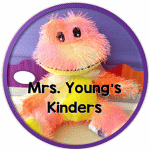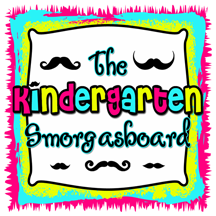This Friday, we had our first Four Winds program!
Parent volunteers came into our classroom to teach us about nature. This week, we learned about insect life cycles. We learned that caterpillars and grasshoppers are both insects that go through many stages (changes). They both eat a lot and grow and change. We watched a puppet show and then explored our school's garden for insects. Thank you to our parent volunteers! We enjoyed our time with you learning about nature.Later that day, we wrote recorded our new learning in our Four Winds Science journals. We are real scientists - observing and recording what we see and learn!
As a follow-up activity, we created "butterfly life cycle" posters. These went home in folders on Friday. Ask your child to tell you about the life cycle of a butterfly!
Literacy -
We read many books about insects in preparation of our Four Winds lesson. Through our reading we learned a lot about insects:- insects hatch from eggs
- butterfly/caterpillar eggs can be found on leaves
- dragonfly eggs are in the water
- a dragonfly hatches out as a nymph
- baby insects eat and eat and grow and grow
- we eat and grow too
- insects change as they grow (metamorphasis)
- we grow and get bigger, but we don't change like insect do
We compared and contrasted our learning about butterflies and dragonflies using a simple Venn diagram. The common core for kindergarten information text states:
Phonics:
Our focus has been on letter knowledge. We are looking closely at the shape of letters so we can sort them by distinctive features. We have sorted magnetic letters by color, those with holes, those with no holes, letters with curves, letters with straight sticks, etc. By handling magnetic letters, children can notice their parts and how they are different from one another. Once the children can identify each letter, they can begin to match letters with the sounds they represent.Word Wall:
We now have the following words on our word wall: a, I, see, children's names, color words.
We are utilizing the word wall by "borrowing" a word from the wall when we need it to copy for our writing.
Math:
Our primary focus continues to be counting, counting, and more counting. We are learning to represent quantity in many ways: on fingers, with objects, as tally marks, and on ten frames. Interwoven into our math work, we have been building upon the understanding and concepts of:
- what comes just after
- more vs less
- subitizing (recognizing dot patterns automatically)
- counting to tell the number of objects
Common Core standards associated with out work:
- CCSS.MATH.CONTENT.K.CC.B.4
Understand the relationship between numbers and quantities; connect counting to cardinality. - CCSS.MATH.CONTENT.K.CC.B.4.A
When counting objects, say the number names in the standard order, pairing each object with one and only one number name and each number name with one and only one object. - CCSS.MATH.CONTENT.K.CC.C.6
Identify whether the number of objects in one group is greater than, less than, or equal to the number of objects in another group, e.g., by using matching and counting strategies.




















